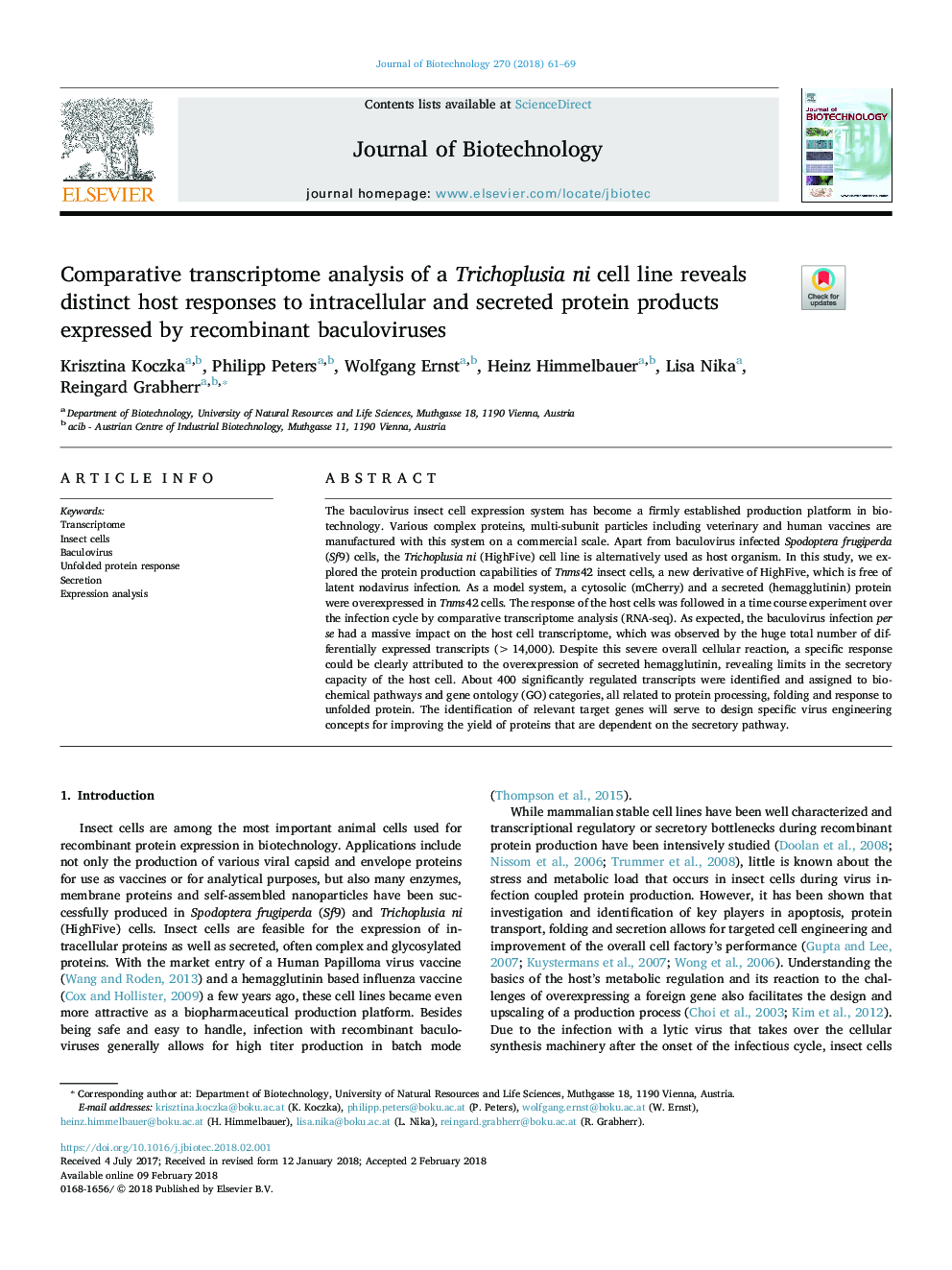| Article ID | Journal | Published Year | Pages | File Type |
|---|---|---|---|---|
| 6490356 | Journal of Biotechnology | 2018 | 9 Pages |
Abstract
The baculovirus insect cell expression system has become a firmly established production platform in biotechnology. Various complex proteins, multi-subunit particles including veterinary and human vaccines are manufactured with this system on a commercial scale. Apart from baculovirus infected Spodoptera frugiperda (Sf9) cells, the Trichoplusia ni (HighFive) cell line is alternatively used as host organism. In this study, we explored the protein production capabilities of Tnms42 insect cells, a new derivative of HighFive, which is free of latent nodavirus infection. As a model system, a cytosolic (mCherry) and a secreted (hemagglutinin) protein were overexpressed in Tnms42 cells. The response of the host cells was followed in a time course experiment over the infection cycle by comparative transcriptome analysis (RNA-seq). As expected, the baculovirus infection per se had a massive impact on the host cell transcriptome, which was observed by the huge total number of differentially expressed transcripts (>14,000). Despite this severe overall cellular reaction, a specific response could be clearly attributed to the overexpression of secreted hemagglutinin, revealing limits in the secretory capacity of the host cell. About 400 significantly regulated transcripts were identified and assigned to biochemical pathways and gene ontology (GO) categories, all related to protein processing, folding and response to unfolded protein. The identification of relevant target genes will serve to design specific virus engineering concepts for improving the yield of proteins that are dependent on the secretory pathway.
Related Topics
Physical Sciences and Engineering
Chemical Engineering
Bioengineering
Authors
Krisztina Koczka, Philipp Peters, Wolfgang Ernst, Heinz Himmelbauer, Lisa Nika, Reingard Grabherr,
